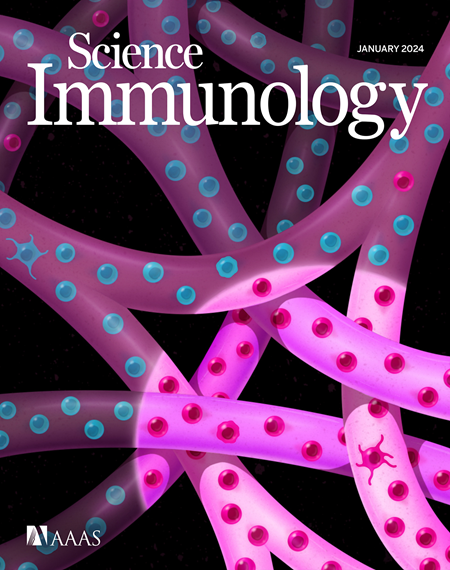C/EBPα activates Irf8 expression in myeloid progenitors at the +56-kb enhancer to initiate cDC1 development
IF 17.6
1区 医学
Q1 IMMUNOLOGY
引用次数: 0
Abstract
Development of type 1 conventional dendritic cells (cDC1s) underlies the capacity to generate antiviral and antitumor immune responses. Here, we identify the basis for cDC1 development from its earliest progenitors, determining the hierarchy of several required transcription factors and uncovering a series of mandatory cis interactions between constituent enhancers within the Irf8 superenhancer. We produced in vivo mutations of two C/EBPα binding sites that comprise the Irf8 +56–kilobase (kb) enhancer that markedly reduced IRF8 expression in all myeloid progenitors and impaired cDC1 development. These sites did not bind RUNX1 or RUNX3, and C/EBPα expression was instead regulated by their action at the Cebpa +37-kb enhancer, placing RUNX factors upstream of Cebpa in regulating Irf8. Last, we demonstrate that cis interactions between the +56-kb Irf8 enhancer and the previously reported +41- and +32-kb Irf8 enhancers are mandatory in the sequential progression of these stage-specific constituent elements.
C/EBPα激活髓系祖细胞中+ 56kb增强子上的Irf8表达,启动cDC1的发展
1型常规树突状细胞(cDC1s)的发育是产生抗病毒和抗肿瘤免疫反应的基础。在这里,我们确定了cDC1从其最早的祖细胞发展的基础,确定了几个必需的转录因子的层次结构,并揭示了Irf8超增强子中组成增强子之间的一系列强制性顺式相互作用。我们在体内产生了两个C/EBPα结合位点的突变,其中包含Irf8 +56千碱基(kb)增强子,显著降低了所有髓系祖细胞中Irf8的表达,并损害了cDC1的发育。这些位点不结合RUNX1或RUNX3, C/EBPα的表达通过它们在Cebpa + 37kb增强子上的作用来调节,将RUNX因子置于Cebpa调控Irf8的上游。最后,我们证明了+56-kb的Irf8增强子与先前报道的+41- kb和+32-kb的Irf8增强子之间的顺式相互作用在这些阶段特异性组成元件的顺序发展中是强制性的。
本文章由计算机程序翻译,如有差异,请以英文原文为准。
求助全文
约1分钟内获得全文
求助全文
来源期刊

Science Immunology
Immunology and Microbiology-Immunology
CiteScore
32.90
自引率
2.00%
发文量
183
期刊介绍:
Science Immunology is a peer-reviewed journal that publishes original research articles in the field of immunology. The journal encourages the submission of research findings from all areas of immunology, including studies on innate and adaptive immunity, immune cell development and differentiation, immunogenomics, systems immunology, structural immunology, antigen presentation, immunometabolism, and mucosal immunology. Additionally, the journal covers research on immune contributions to health and disease, such as host defense, inflammation, cancer immunology, autoimmunity, allergy, transplantation, and immunodeficiency. Science Immunology maintains the same high-quality standard as other journals in the Science family and aims to facilitate understanding of the immune system by showcasing innovative advances in immunology research from all organisms and model systems, including humans.
 求助内容:
求助内容: 应助结果提醒方式:
应助结果提醒方式:


